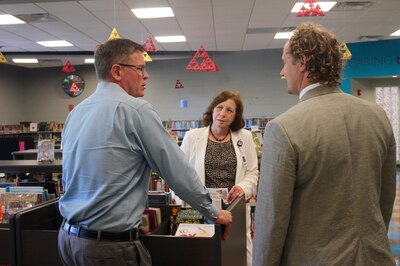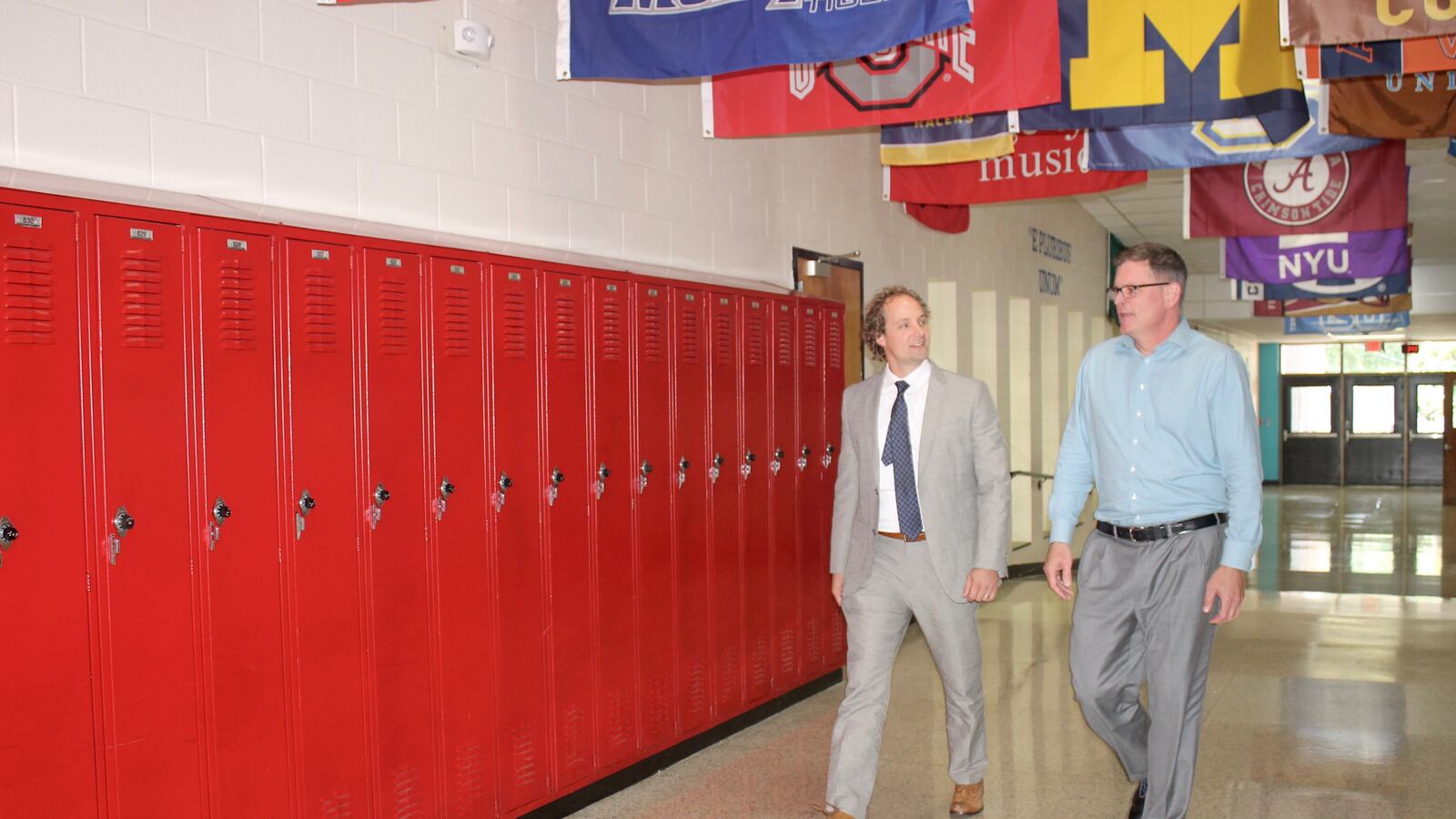Gary Hughes remembers rolling his eyes last year after learning that Nashville’s new school superintendent was completely revamping the way principals like himself would be supervised.
After all, as a 10-year school administrator, Hughes thought he had done just fine under the previous system. Occasional drop-in visits from central office personnel found that his school was in compliance with all district rules and regulations.
But beginning last fall, his new supervisor, Craig Hammond, began coming to J.T. Moore Middle School for about a half day every other week — visiting classrooms with Hughes, reviewing student achievement data together, and talking through ways to support individual teachers.
“I was not happy about the change,” Hughes recalls. “It was like a bunch of new hoops I was going to have to jump through.”
This month, as he began his second year under the new supervisory model, Hughes feels “transformed” as a school leader. He also believes that what he’s learning in collaboration with Hammond is trickling down to improve the quality of instruction in classrooms at J.T. Moore.
“This approach is about support, not compliance,” said Hughes. “It’s changed the way I think about what I do.”
Hughes’ experience mirrors the findings of the first three years of a four-year study into the role of those who supervise school principals. The research, by Vanderbilt University and Mathematica Policy Research, suggests that radically changing the job description of such supervisors to emphasize coaching and mentoring instead of operations and administration could refocus school communities on improving student achievement, retaining more teachers, and strengthening school climate.
The findings also have major implications for how central offices are designed — with a shift from a top-down compliance model to a more bottom-up one that focuses on servicing schools.
“This is a good news story about district reform,” said Ellen Goldring, the report’s lead author and a Vanderbilt professor of educational leadership and policy.
“It’s about fundamentally changing the supervisor role in a way that principals report that they’re feeling more supported and equipped. But in order to make that new role effective, it became very clear that central office also needed to rethink and realign to that perspective.”
Reshuffling priorities
The study, which is part of the Wallace Foundation’s $24 million Principal Supervisor Initiative, was based on changes made between 2014 and 2017 at six urban districts in Broward County, Florida; Baltimore, Maryland; Cleveland, Ohio; Des Moines, Iowa, Long Beach, California; and Minneapolis, Minnesota.
Each district revamped the supervisor’s job description; reduced the number of schools each supervisor was responsible for; trained them on how to coach and support principals; and restructured the district’s central office to shift administrative, operations, and compliance tasks away from those roles.
With the changes, most districts reported that their supervisors were spending an average of 63 percent of their time working directly with principals to help them hone their skills in instructional leadership. That’s thought to be significantly more one-on-one time than in years past, when supervisors had substantially larger portfolios.
“That’s a lot of time that a principal has someone to plan with, problem-solve with, receive support,” Goldring said.
"This approach is about support, not compliance. It’s changed the way I think about what I do."
Gary Hughes, principal
While Nashville’s district was not part of the study, Director of Schools Shawn Joseph heard about the initiative while working in Maryland public schools and adopted some of its components when he became leader of Tennessee’s second largest district in 2016.
That meant restructuring the central office so that each supervisor was overseeing about a dozen schools instead of the previous 30 or so.
Such investments are one of the biggest challenges — but also one of the most critical components — of facilitating meaningful instructional engagement with principals, said Sito Narcisse, Nashville’s chief of schools.
“We believe the lever of change for improving schools is through the principal,” said Narcisse.
The study has other implications for states like Tennessee, which launched a teacher evaluation system in 2011 that requires principals to observe classroom instruction and critique their teachers.
“There’s clearly a shift in the role of principals,” said Goldring, whose next report will focus on how the supervisory changes impact principal effectiveness. “But how do we coach and develop principals so that they can better coach and develop their teachers? That’s what this research is all about.”
Leadership matters
When it comes to the impact of school-related factors on student learning, research shows that school leaders are second in importance only to teachers — but also can have a multiplier effect on the quality of teaching.
Historically, however, principals’ professional development has been limited to periodic workshops and trainings that focus mostly on administrative, operational, and compliance issues. They rarely receive ongoing, embedded coaching and problem-solving support based on the instructional needs of specific schools.
The Wallace Foundation identified existing principal supervisors as a potential resource to change that dynamic in large urban districts.
“They already have one foot in the schools and one foot in central office,” explained Jody Spiro, the foundation’s director of education leadership.
But few districts have taken that route on their own.
Even though these educators are responsible for evaluating principals and usually report to the chief academic officer, they tend to focus on “putting out fires” — things like parent complaints and broken air conditioners — instead of coaching teachers.

Dottie Critchlow recalls what it was like to supervise Nashville principals under the district’s previous model. With about 28 schools to monitor, giving all of her principals meaningful critiques was logistically impossible, she said.
“It was like saying to a mama, ‘Who do you love the most?’” said Critchlow, who now coaches the district’s principal supervisors. “The answer is ‘the kid who needs me the most.’ I spent a lot of time with brand new principals figuring out the job and others who weren’t being effective. It wasn’t about developing instructional leaders; it was about maintenance.”
Last year under the new model, Hammond monitored a dozen schools — the average number that the study landed on for effective engagement between supervisors and their principals.
“If I had 20 schools, I’d start losing track of who’s where,” said Hammond, himself a former principal. “This number allows me to walk with principals in a building, to give feedback, and remember the things that I see.”
The investment paid off when Hughes received his first evaluation from Hammond. It was, the principal said, an “aha! moment” — the most meaningful feedback of his career.
“It’s clear he knew me, understood my school, and really thought this through,” Hughes said. “He was very in tune with what I needed to improve.”

